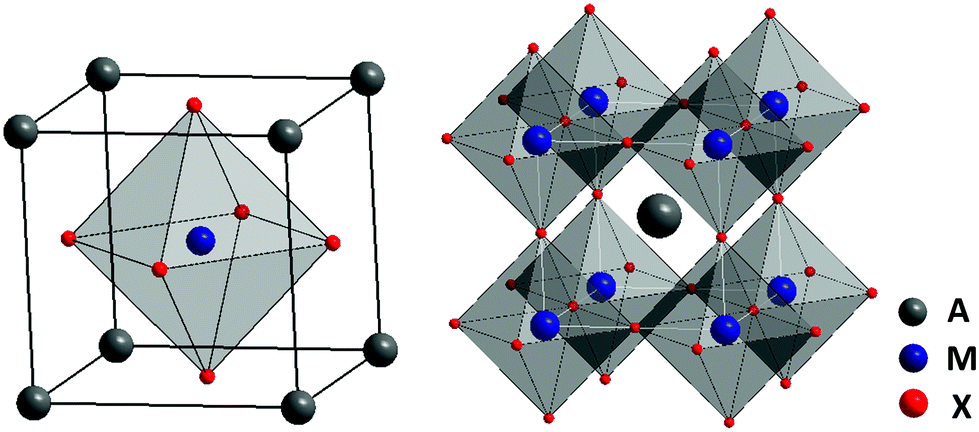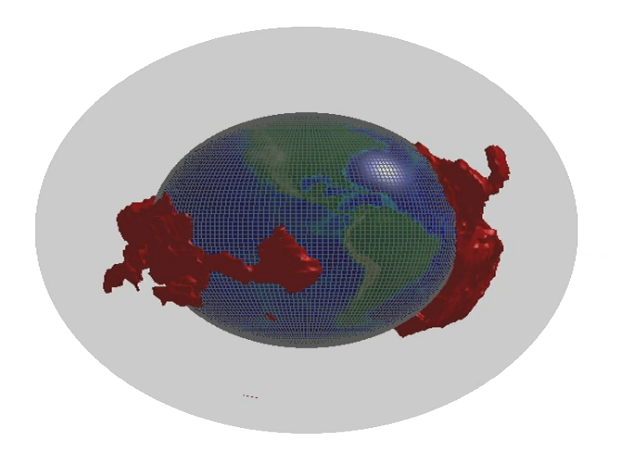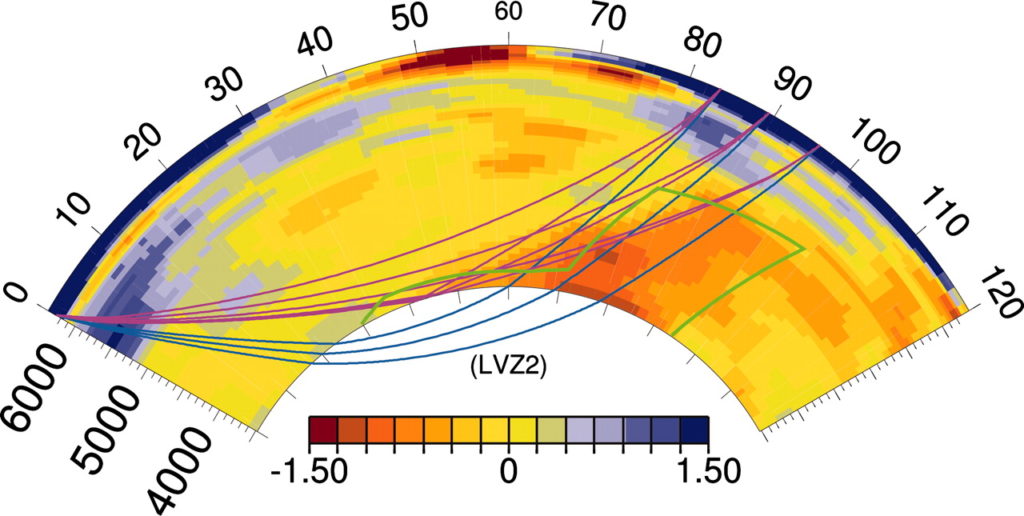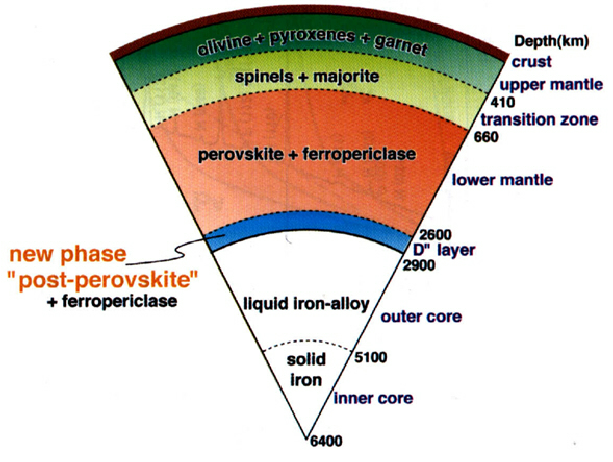The mantle, about 2900 km thick, occupies most of the Earth’s interior. Geophysics also gives us indirect information about its structure and composition, which, as we have seen, is mainly peridotidic. By studying the properties of the seismic waves that we know have crossed the mantle we can derive crucial information about its characteristics. Its upper limit is identified by Mohorovicic (Moho) boundary. Two changes in the speed of seismic waves define two discontinuities within it at 410 km and 660 km depth. We therefore have a 3-layer mantle, the upper mantle, a transition zone and the lower mantle.
In 1912 Ludwig Geiger and Beno Gutenberg identified in the upper part of the mantle an area of low seismic velocity (LVZ) that we call today the Asthenosphere. The low seismic velocity (and an almost cancellation of the S waves) must be due to areas partially melted in the upper mantle that would allow isostatic movements and as we will see later, those of the plates. Basically these are materials in a state similar to that of a toothpaste that reacts rigidly to rapid impulses such as seismic waves, and fluidly to slow impulses such as tectonic movements.
The portion of mantle (mantle lid) above the LVZ is therefore rigid and, together with the crust, it forms the Lithosphere. The Lithosphere-Asthenosphere Boundary (LAB) is here defined as a rheological boundary (RBL) between the higher-viscosity lithosphere above and the lower-viscosity (and warmer) Asthenosphere below. But this boundary can also be defined by temperature (Thermal Boundary Layer = TBL) that separates areas where heat transport occurs by conduction (the Lithosphere) versus areas where the heat transport happens by convection. Convection cells may only develop in the less viscous Asthenosphere. Also composition can vary across the LAB, as the ultramafic lithospheric mantle (the lid) is depleted of its volatile constituents.
The transition zone (410-660 km) is due to the abrupt thickening of the minerals that compose it. The crystalline structures adapt to the enormous pressures that occur at these depths, generating structures typical of the spinel, an oxide of magnesium and aluminum (MgAl2O4) with a very compact structure. The transition zone’s rheological properties (of reaction to stress) should prevent large exchanges of materials with the upper mantle. A peculiar characteristic of the transition zone is the abundant presence of water (in the form of OH- ions). It is thought that water is released by the transformation of crystals into phases that are in equilibrium with the pressures and temperatures of the base of the transition zone.
The lower, denser and warmer mantle of the transition zone extends to a depth of about 2700 km. Rheologically, the lower mantle is much stiffer than the rest of the mantle, showing characteristics similar to perovskite-like crystalline structures, an oxide of titanium or other metals with a very dense crystal structure. It has been proven in the laboratory that olivine subjected to typical lower mantle pressures is no longer stable and assumes a crystal structure with a much denser lattice, typical of perovskites, with formula (Mg,Fe)2SiO3.

Structure of Perovskite CaTiO3 = AMX3, which in the mantle should be represented by (Fe,Mg)2SiO3 i.e., olivine that adapts to high pressures (A = Fe or Mg, M = Si, X = O)
Although the temperature is very high, the pressures are such that the rocks are not very ductile. Obviously it is the least known and most debated layer of the mantle by geologists and geophysicists. Prominent features of this layer are two structures of irregular shape found under Africa and below the Pacific, respectively known as Tuzo and Jason. They have been identified through seismic tomography and show extremely irregular shapes. They are lying over the core boundary and they are estimated to peak at about 800 and 1800 km respectively above the Earth’s core’s surface.

James (left) and Tuzo (right) as they would appear at the surface – instead they are lying on the Earth’s core, in the lower mantle, making up for 6% of Earth’s volume
Below the lower mantle a thin layer (up to 2900 km deep) designated as D” has been found. This is the boundary with the core and is an area where it is believed that there are processes of fusion of rocks whose material is pushed upwards into the more rigid rocks of the lower mantle. It is a silicic material with a high iron content and very dense structures called ‘post-perovskite’. Some believe that they can generate plumes that also reach the transition zone.
Below layer D” we have the boundary with the core (CMB = Core mantle Boundary).


